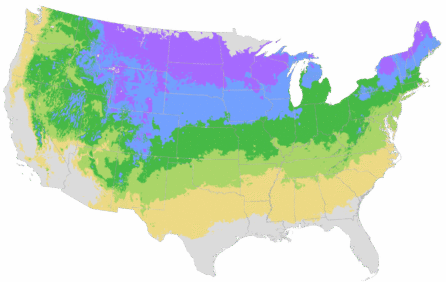You're growing in this Zip Code:
Change LocationDiscover Plants for Your Area
Purple Dome New England Aster
Aster novae-angliae 'Purple Dome'
We no longer grow this plant
Be Inspired: How to Use this Plant
| Bloom Time | Late summer to early fall |
|---|---|
| Deciduous/Evergreen | Herbaceous |
| Special Features | Attracts Butterflies, Easy Care, Fast Growing |
| Problems/Solutions | Deer Resistant |
| Growth Rate | Fast |
| Growth Habit | Clumping |
| Flower Attributes | Flowers for Cutting, Showy Flowers |
| Landscape Use | Border, Poolside |
| Design Ideas | Valuable late season bloomer for the traditional perennial border. Equally well suited to casual country gardens along picket fences and mixed with spring blooming companions. A native hybrid that belongs in meadow gardens as a nectar source. Use around edges of prairie or above a wetland in an open sunny woodland. Ruggedly adaptable to rock gardens and dry stream beds. Mass like groundcover for a much larger semiformal color mass. |
| Flower Color | Purple |
| Foliage Color | Green |
| Companion Plants | Blanket Flower (Gaillardia); Black-Eyed Susan (Rudbeckia); Fountain Grass (Pennisetum); Coneflower (Echinacea); Blue Fescue (Festuca) |
| Care Instructions | Thrives in moist, fertile, slightly acidic, well-drained soils but highly adaptable. Prefers cool summer climates. Water deeply, regularly during the first growing season to establish an extensive root system. For a neat, tidy appearance, remove old foliage before new leaves emerge. Divide clumps every 2 to 3 years in early spring. |
| History | The asters are the largest tribe of the daisy family, Compositae. The genus is named from the Latin for star because of the star-shaped flowers. Up to 500 species are native around the world except Australia and related islands. This species is the New England aster which is native to a much larger range than these small northeastern states. It is found in open woods and fields south to Virginia and west to North Dakota and New Mexico. |
| Lore | In Britain the aster is known as Michaelmas daisy because it is in bloom during the feast of St. Michael the Archangel, September 29th. |
| Bloom Time | Late summer to early fall |
|---|---|
| Deciduous/Evergreen | Herbaceous |
| Special Features | Attracts Butterflies, Easy Care, Fast Growing |
| Problems/Solutions | Deer Resistant |
| Growth Rate | Fast |
| Growth Habit | Clumping |
| Flower Attributes | Flowers for Cutting, Showy Flowers |
We no longer grow this plant
We no longer grow this plant
Buy Online
This plant is not available to purchase online.
We no longer grow this plant. For replacement suggestions, check out the plants “You May Also Like” below.
About Us
We have been pioneers and craftsmen in the art of growing plants for nearly
100 years. Since our founding in Southern California by Harry E. Rosedale, Sr.
in 1926, we have been absolutely dedicated and obsessed with quality.
We have been pioneers and craftsmen in the art of growing plants for nearly 100 years. Since our founding in Southern California by Harry E. Rosedale, Sr. in 1926, we have been absolutely dedicated and obsessed with quality.





